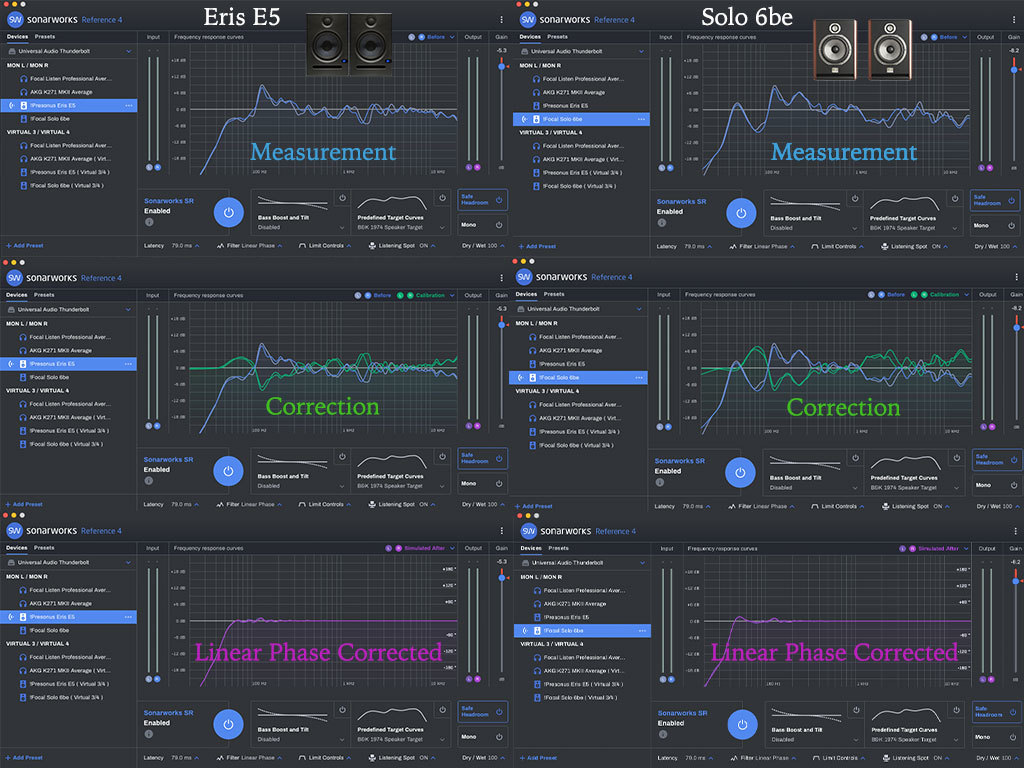

- #Sonarworks reference 4 vs room eq wizard how to
- #Sonarworks reference 4 vs room eq wizard pdf
- #Sonarworks reference 4 vs room eq wizard install
- #Sonarworks reference 4 vs room eq wizard 32 bit
- #Sonarworks reference 4 vs room eq wizard pro

I know that True-Fi offers an age-based adjustment (presumably for treble) and a bass adjustment, but with custom EQ I keep more options. The output of the REW calibration is just parametric EQ settings, so anything with a parametric EQ can be used (e.g. It’s not entirely clear to me what curves Sonarworks and Toneboosters target, but since they seem focused on mixing I suspect they might be targeting something a bit different.ĭoesn’t require special software to be installed. Targets the Harman response, which I think I prefer for enjoyment listening. Is targeted to my preferred listening volume (equal loudness contours and all that). Sonarworks does offer an individual calibration service which could be handy for someone who can’t do their own measurements. Audeze in particular is known for unit to unit variation, so I like the idea that my compensation is specific to my exact headphone and even my playback chain (DAC/Amp). Works with my specific flavor of headphone. My preferred headphones are the LCD2C and the DT 1990, neither of which was supported by these programs when I tried them (though Sonarworks supports the DT 1990 now) I find that the DIY EQ approach has a few key benefits though: Yeah, I’ve tried Sonarworks True-Fi as well as Toneboosters Morphit and with supported headphones I do think I generally liked the result. So, not exactly the Harman target, but in the ballpark I guess. Indeed it would be close to the Harman curve with some tweaks. * I emailed MiniDSP and they confirmed that I guess those qualities are not a result of its frequency response–I’ll have to see how it does with a tube amp Even now that it has a fairly similar frequency response to the DT 1990 and LCD2C, it still sounds clearly inferior to me (grainy and congested). The HD 600 was already pretty close to the target but needed to be brought down at around 4.2 and 7.7 kHz. Like right now, I’m listening to Beethoven’s 5th which I didn’t used to think was really in the LCD2C’s wheelhouse, but it sounds sublime! After EQ’ing them both to a similar overall frequency response, I can tell that I’m going to have to seriously reevaluate those opinions. I’ve developed fairly strong opinions on the relative merits of my LCD2C and DT 1990. I’m going to have to spend a lot of time with these profiles to really understand what they’re doing for me, but I have two fairly strong initial impressions: I’ve already created EQ profiles for my LCD2C, DT 1990 and HD 600. So in theory, this gets my headphones close to the Harman target* using a very intuitive and painless process. Is similar in intent to the “preferred headphone target response” identified by Olive, Welti and McMullin (Ref. That’s it! According to their desktop EQ guide their headphone correction curve With a touchscreen EQ like on UAPP, this is easy and kind of fun, as you can see the results in real time in REW!
#Sonarworks reference 4 vs room eq wizard pro
I tried this out with my LG V20 and USB Audio Player Pro (UAPP), and I’m frankly blown away.
#Sonarworks reference 4 vs room eq wizard how to
The results are very close to my commercial plugin chain.I just found a guide from MiniDSP on how to interactively equalize headphones using their E.A.R.S.
#Sonarworks reference 4 vs room eq wizard 32 bit
I pair it with Isone Pro which is the free 32 bit version of Isone 3. REEQ was what I was using but I think the excellent free linear phase EQ called Qrange might be better for this application.
#Sonarworks reference 4 vs room eq wizard pdf
Each one is in PDF format with detailed EQ curves (all bands, gain and Q are provided) that can be easily recreated in the EQ of your choice. He has something like 2500 EQ compensation presets for most major studio grade headphones.
#Sonarworks reference 4 vs room eq wizard install
Quite honestly I could mix on the Beyers but I just prefer speakers in most cases.Īnyway I am creating a portable install using nothing but free plugins and came across a nice alternative to Sonarworks from reddit user Oratory1990. Its especially good for checking low end compared to my 6.5" Kali monitors in a DIY treated bedroom. I use it in conjunction with The Toneboosters Isone 3 crossfeed plugin and I'm getting really great results. So I have and use Sonarworks with my Beyer DT880's.


 0 kommentar(er)
0 kommentar(er)
